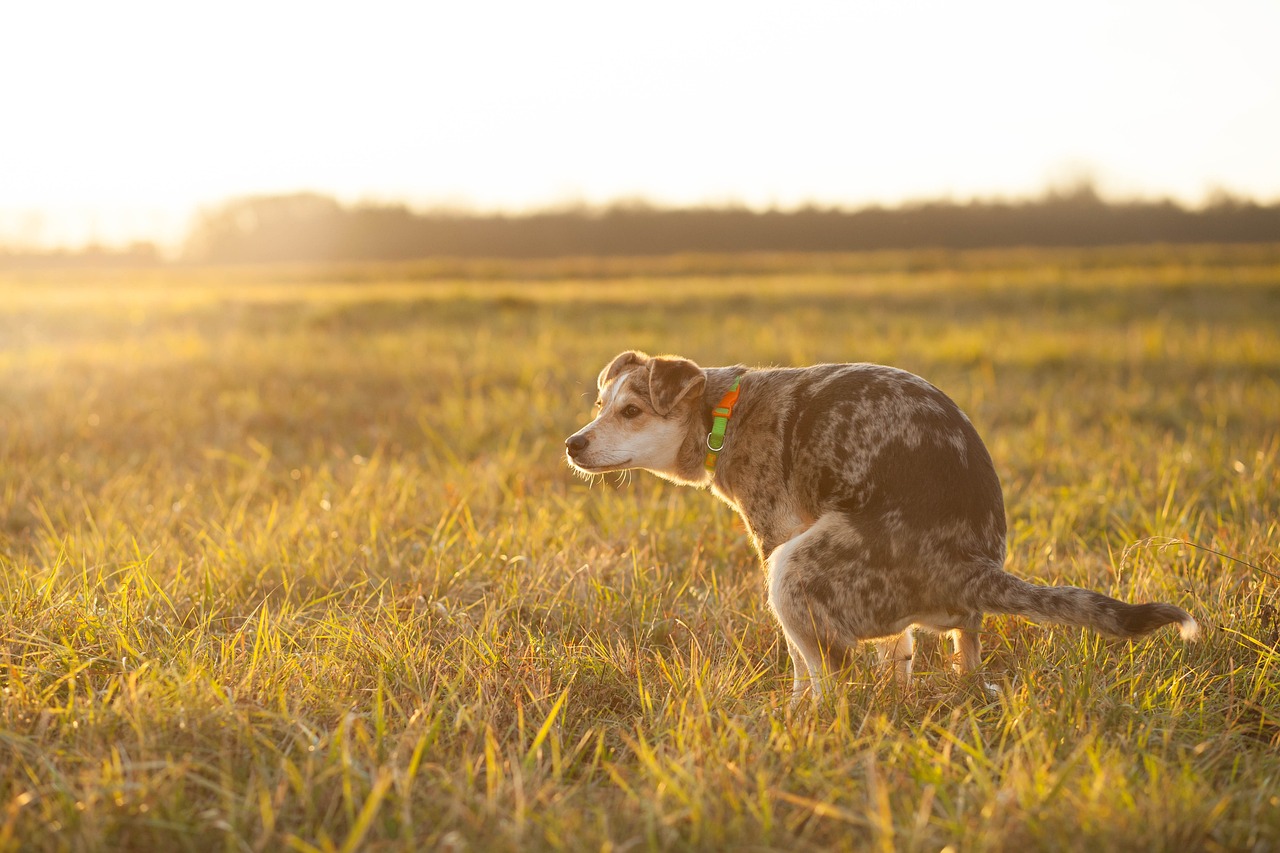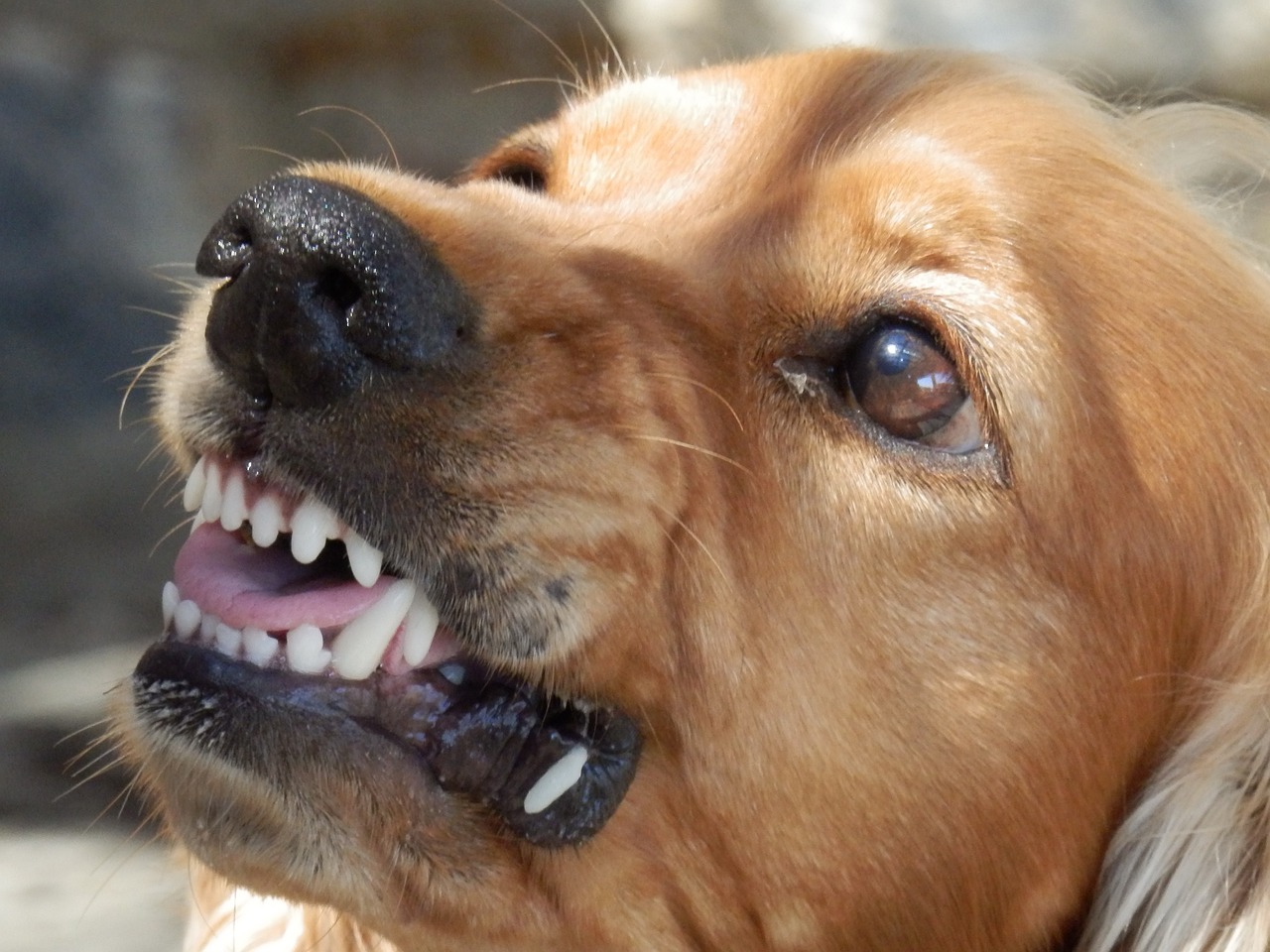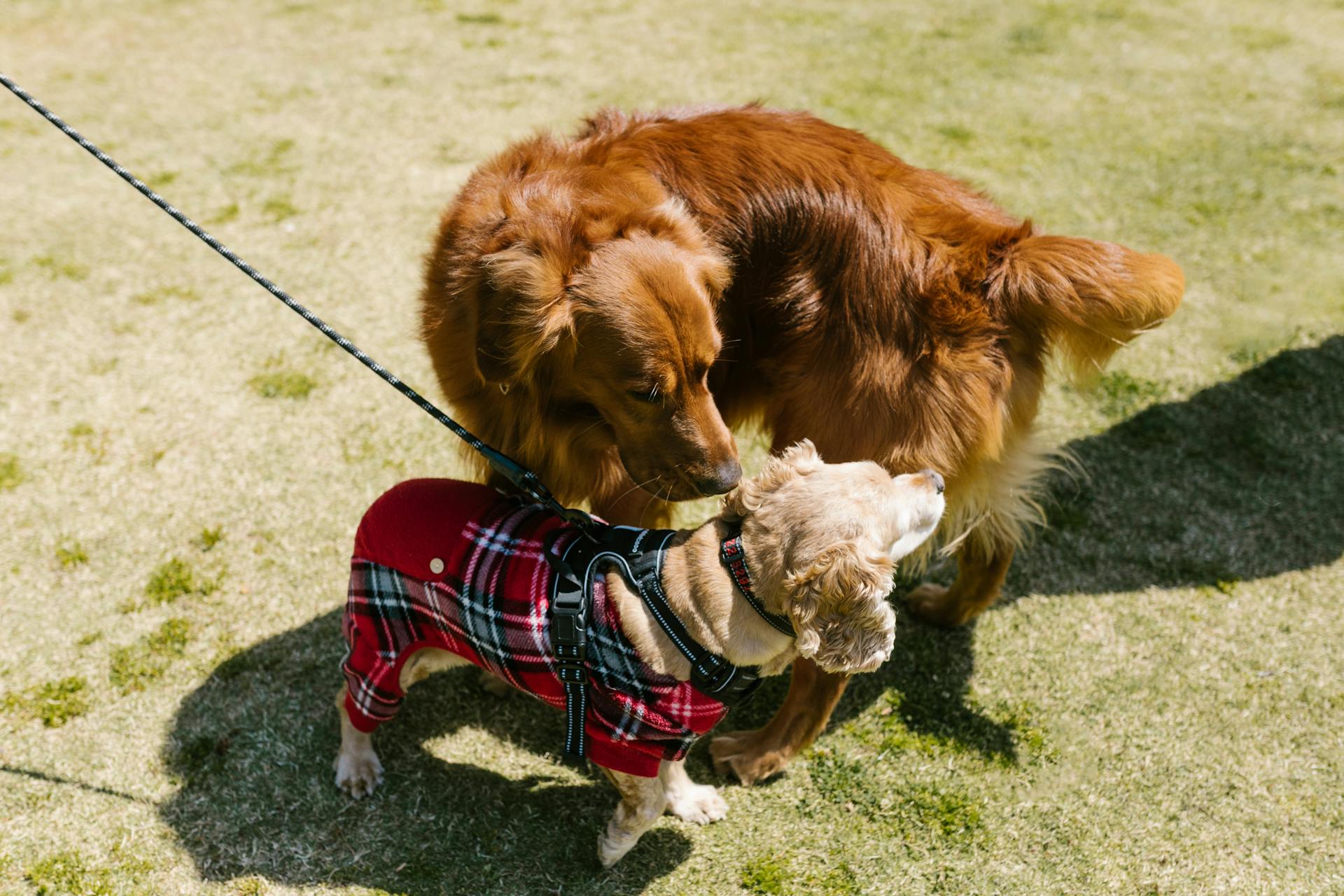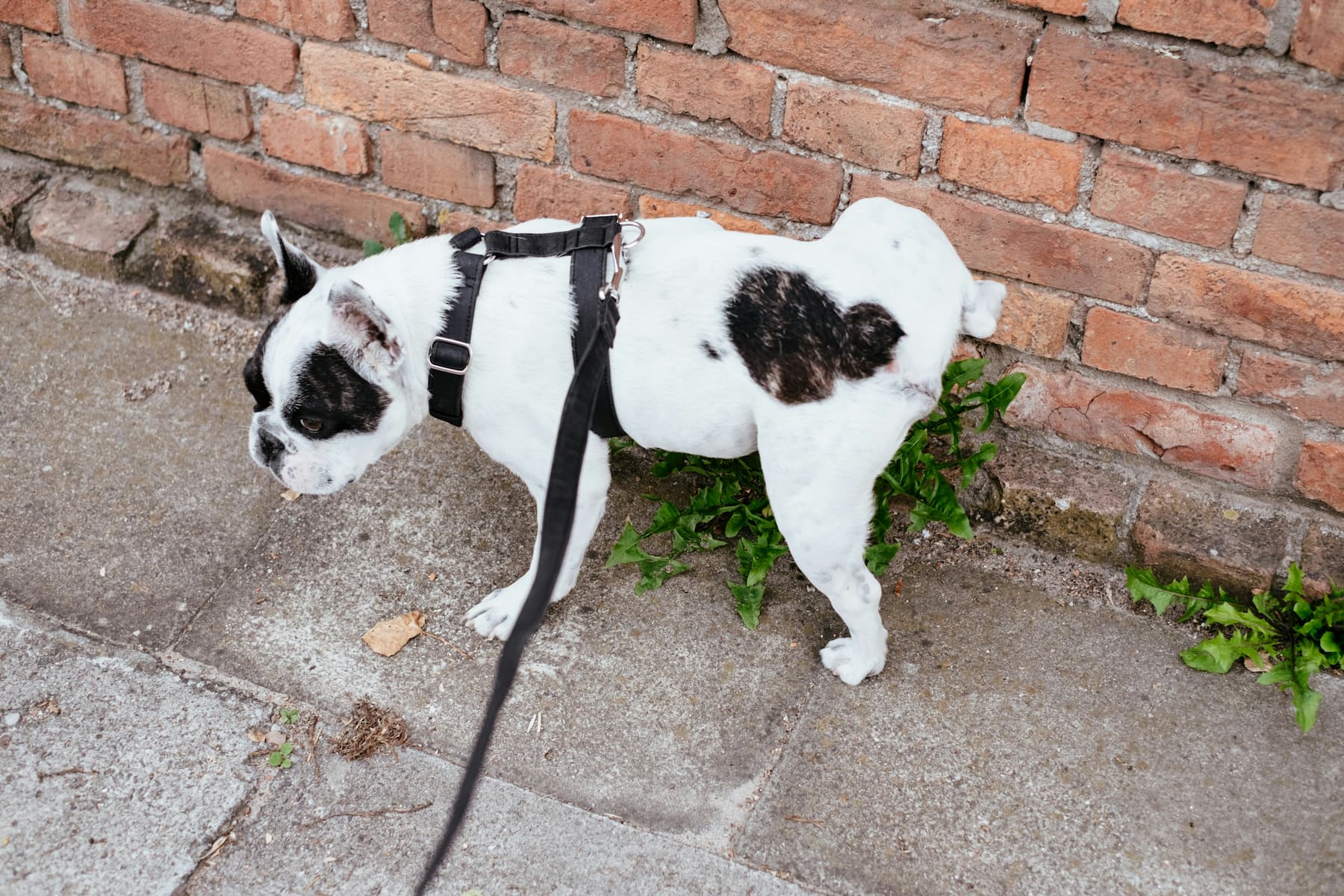Do You Struggle to Wait for Your Dog to Potty?
This may be a way too familiar scene: you’re outside with your dog for his potty break, all bundled up like a burrito. Meanwhile, your dog is blissfully unaware of your growing impatience along with the risk of hypothermia. As he’s just sniffing around every single blade of grass, taking his sweet time, you’re deeply wondering “Why won’t you just GO?!” Wouldn’t it be great if there was a way to tell our dogs to hurry up and do their business? Well, here is the good news: you can train your dog to go potty on cue the moment you let him out of the door!
Skip the Gimmicks and Start Training!
Forget about special sprays and scented pee posts with fake promises of rushing your dog to the potty. You’ll be spending a lot of money on marketing gimmicks that you could spend instead on more productive items—such as a treat bag and some tasty treats for your dog.
The best part is that you can start training your dog to go potty on command. (Well, let’s say “on cue” since we’ll be training this by using gentle, positive reinforcement methods as early as today.) The more you practice, the better!
Can You Really Train a Dog to Go Potty on Cue?
Yes, you certainly can train a dog to go potty on cue. I have trained my Rottweilers from early puppyhood and have continued doing so with foster puppies and many of my client’s puppies. Trainers teach service dogs this cue because the dogs need to go potty in a timely fashion. They also need to do so on a variety of surfaces.
Of course, it’s easier to train from an early age since puppies are particularly malleable. And, you’re working on a rather blank slate, versus years of established behaviors. But, in case you’re wondering, yes, you can still teach an old dog tricks (it just takes a little longer).
How to Train Your Dog to Do His Business on Cue
To train your dog to go potty on cue, you’ll need to always carry some treats on you. I like to keep mine in a treat bag that’s clipped to my belt or in a deep pocket in my cargo pants. The choice of treats matters because you’re ultimately competing with the environment and all its intriguing smells. So go high value!
The reason you’re always keeping the treats on you is that you don’t want to be caught unprepared. You don’t want to miss a teaching moment as it unfolds and allow it to go wasted!
To train your dog to do his business on cue, we’ll be using a training method known as “capturing.”
What Is Capturing?
Capturing involves reinforcing desirable behaviors as they naturally unfold. What you’ll mostly need to do is:
- Observe your dog (which you’re likely doing anyway when you take your dog outside to potty)
- Be ready to praise (good boy!)
- Reward your dog the moment he goes potty
Timing is everything here.
- If you’re too slow, you may be rewarding your dog for sniffing a patch of grass rather than peeing or pooping.
- If you’re too fast, your dog may stop the flow of urine or poop in its tracks. (And then maybe he’ll finish once he’s inside the home).
The right moment to say, “Good boy!” is right when you witness that last drop of pee and piece of poop dropping. Just when your dog is about to shift from his squatting position to doing something else.
Did You Get the Timing Right?
You know you got your timing right when upon hearing your “good boy!” your dog moves from his squatting position to enthusiastically rush towards you for his treat. If your dog is at a distance from you, you can toss your dog a treat his way immediately after saying “Good boy.” If he’s on a leash, you can hand-feed him the treat.

When Can You Add the Verbal Cue “Go Potty”?
You can start adding the verbal cue “go potty” once your dog has successfully associated the action of going potty with praise and treats.
In animal training, reinforced behaviors tend to strengthen and repeat over time. So, after several repetitions, you should see a steady increase in your dog’s willingness to go potty. Perhaps you are noticing he’s going potty earlier than before. Or maybe he starts looking at you with anticipation once he’s done going potty.
This is a good time to start saying “go potty” right the moment when you know he’s about to pee or poop. For example, right when he’s about to assume the peeing/pooping posture.
The Magic of Positive Reinforcement
After your dog goes, reward your dog with a jackpot of treats (several treats fed in a row) in hopes of impressing him enough. After several reps, your dog should start associating the cue with the act of eliminating. Also, he’ll link the act of eliminating with the praise and rewards. On top of this, your dog may also start associating going outside and the location with the act of eliminating.
All of this should cause him to speed up going potty because of the history of reinforcement doing its magic. Once your dog goes potty reliably upon hearing the word “go potty,” you can start to raise the criteria a bit. For instance, start asking him to go potty in a new area or a place with some distractions. This can turn out helpful when you’re traveling or if you’re training a service dog.
What Other Words Can Be Used to Tell a Dog to Potty?
You can literally use any words you like, as long as they’re not too similar to other cue words you use. They should also not be so long that, by the time you’re done, your dog has finished going potty and is on to something else.
Commonly used “go potty” words are the following:
- Do your job
- Go tinkle
- Go pee-pee
- Get busy
- Hurry up!
- Water the lawn (yes, some people really use this!)
Can You Train a Dog to Specifically Pee and Poop on Command?
I am often asked this, and I think this is possible, based on my personal experience. While initially we taught our dogs to “go potty,” at some point, I started saying “go pee-pee” and then right after “go poopy.”
Now, I must admit that I am not 100 percent sure if my dog could really differentiate between the two cues. Or, if they just learned that they should always pee first and then poo right after. What I know is that with time, I had two dogs that would pee and poop quickly and come back into the house empty. I was pretty satisfied with that. Their cues were then generalized to various settings so that when we traveled, things became simple. Our dogs would pee and poop on patchy areas by the airport before boarding a flight or even on a designated area on the floor of a ferry ride.
Final Thoughts
As seen, training your dog to go potty on cue can come in extra handy in a variety of situations. We even used it to help collect urine and fecal samples for the vet, which the vet staff were really grateful for! If you have any thoughts on this topic, please drop a comment below. If you need further tips for training, reach out to Ask a Trainer, and we will match your question with one of our experts best suited for your specific needs!




